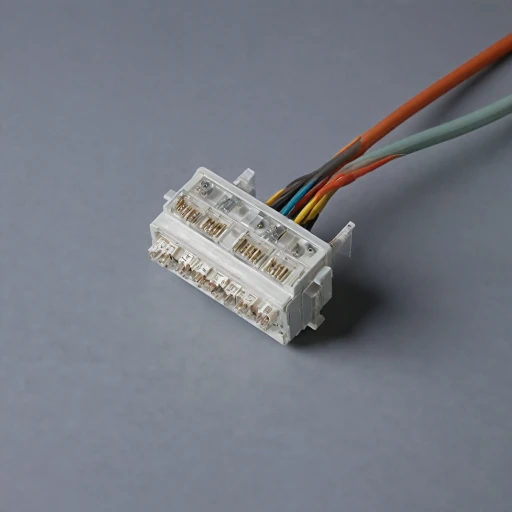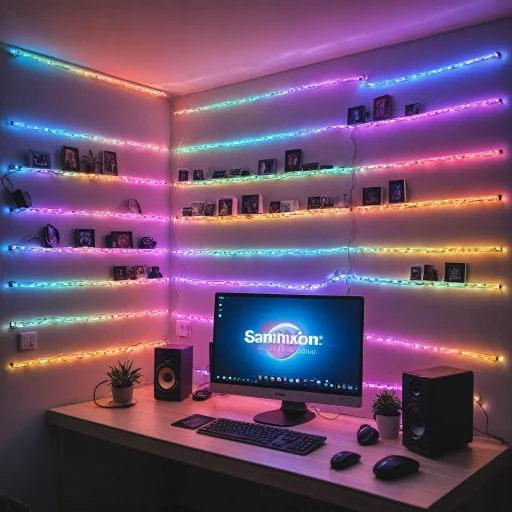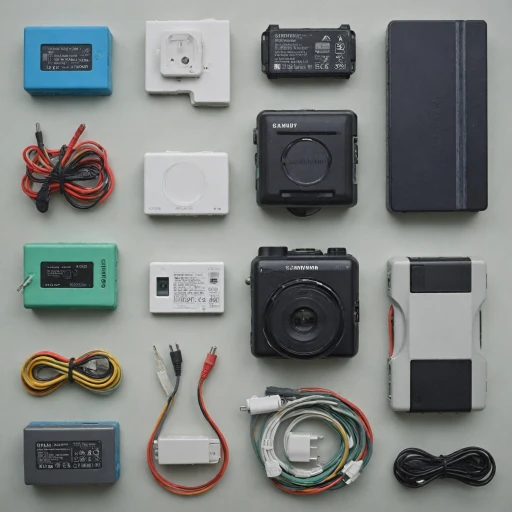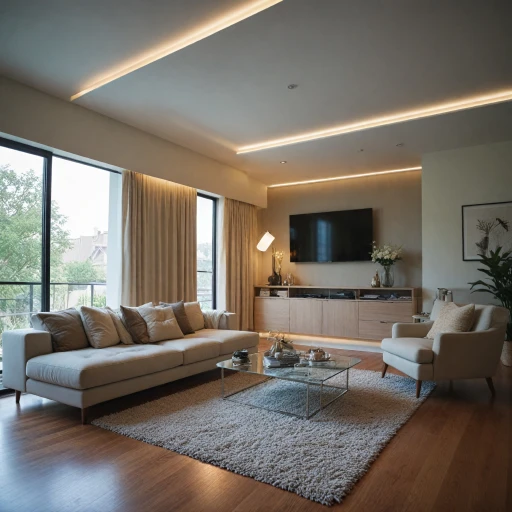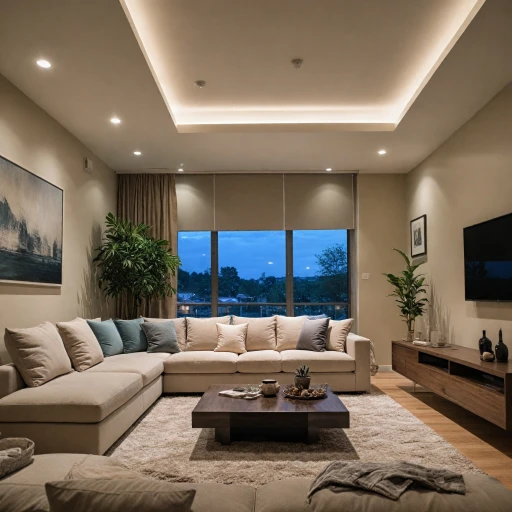
Understanding Wireless Light Bars
Introduction to Wireless Light Bars
Wireless light bars have become an essential accessory for various applications, offering flexibility and convenience. These innovative lighting solutions are particularly popular in the towing industry, where they provide essential illumination without the hassle of wires. Whether you're using them for towing, off-road adventures, or enhancing your vehicle's aesthetics, understanding the basics of wireless light bars is crucial.
How Wireless Light Bars Work
At the core of wireless light bars is the integration of LED technology, which ensures bright and efficient lighting. These bars operate without the need for traditional wiring, relying instead on wireless control systems. This feature makes them incredibly versatile, allowing for easy installation and operation. The use of lithium batteries in these bars ensures long-lasting power, making them ideal for both light duty and heavy-duty applications.
Key Features of Wireless Light Bars
- LED Technology: Provides bright and energy-efficient lighting.
- Wireless Control: Eliminates the need for cumbersome wires, offering ease of use.
- Durability: Designed to withstand various environmental conditions, perfect for outdoor use.
- Portability: Easy to install and remove, making them ideal for temporary setups.
For those interested in enhancing their space with these versatile lighting solutions, exploring the use of aluminum channels for LED strip lights can provide additional customization options.
Benefits of Wireless Light Bars
Advantages of Harnessing the Power of Wireless Light Bars
Wireless light bars are gaining popularity among vehicle enthusiasts and professionals alike, offering several noteworthy benefits. These innovative lighting solutions bring efficiency and convenience to various applications, whether for towing or off-road adventures.- Ease of Installation: Without the need for extensive wiring, wireless light bars simplify the installation process. This means less time spent on setup and more time enjoying the benefits of your light setup.
- Flexibility and Portability: These bars earn the spotlight for their flexibility. Lightweight and often powered by rechargeable lithium batteries, they can be easily relocated or used in multiple contexts, whether on a vehicle or for outdoor use.
- Improved Safety: Wireless tow light bars, such as those by the brand Towmate, enhance safety by providing bright LED lights visible in various conditions. Turn signals and brake lights ensure communication with other drivers, especially crucial during towing operations.
- Durability: Designed with heavy-duty and light-duty applications in mind, these bars often come as water-resistant and impact-resistant, able to withstand the rigors of the road, weather, and job site conditions.
- Versatile Applications: From sporting events to emergency situations, wireless light bars extend their utility across multiple environments, outshining traditional setups. Explore how they can be a part of innovative uses, enhancing your setup's functionality. More on this at LED tape light diffusers.
Choosing the Right Wireless Light Bar
Factors to Consider for the Ideal Choice
When selecting a wireless light bar, it's crucial to consider several factors to ensure it meets your specific needs. The light's purpose and the environment it will be used in can significantly influence your choice. Whether you're looking for a duty wireless solution for heavy-duty tasks or something with a lithium battery for extended use, there are options tailored to various applications.
Key Features to Evaluate
- Battery Life: Opt for a light with a long battery life, particularly if you need reliable performance over extended periods. Some wireless tow lights come with a lithium battery, providing durability and longer runtimes.
- Brightness and Light Quality: The LED lights in your bar should offer high-quality illumination. Whether for turn signals or general lighting, the brightness level is essential for visibility, especially in low-light conditions.
- Durability and Weather Resistance: Towing situations can be demanding, so your light bar should be robust, whether in rain, snow, or dusty environments. Consider heavy-duty bars with appropriate sealing against the elements.
- Mounting Options: Check for flexible mounting solutions like straps, hooks, or pin style attachments to suit different installations. Ease of installation can be a deciding factor if you need to switch locations frequently.
- Control Mechanisms: Consider wireless control options that allow you to manage the lights remotely, contributing to convenience during usage.
Popular Options and Brands
Brands like Towmate offer several wireless light bar options, each equipped with different features tailored to specific needs. Whether you require a simple lite wireless option or a more comprehensive led tow solution, assessing the available models ensures you find the one that best fits your requirements.
For detailed insights into LED light advantages, including options for different setups, visit this exploring the benefits of 4-inch LED can lights.
Installation and Setup Tips
Setting Up Your Wireless Light Bar
Installing a wireless light bar can be a straightforward process if you follow some essential steps. Whether you're using it for towing, as a part of your vehicle's lighting system, or for other innovative uses, getting the setup right is crucial for optimal performance.
Gathering the Necessary Accessories
Before you begin, ensure you have all the necessary accessories. This includes straps, hooks, and chains, which are vital for securing the light bar. If you’re using a TowMate wireless light, make sure you have the compatible control system and battery, such as a lithium battery, to power the LED lights efficiently.
Mounting the Light Bar
Choose a suitable location on your vehicle or desired area where the light bar will be mounted. For towing purposes, ensure the light bar is positioned where it can effectively signal turn signals and brake lights. Use the provided straps or hooks to secure the light bar firmly. If your light bar comes with a pin round or pin style attachment, ensure it fits snugly to prevent any movement during operation.
Connecting the Power Source
Once mounted, connect the light bar to its power source. If your model is a wireless LED light bar, ensure the battery is fully charged. For heavy-duty applications, a duty wireless setup might be necessary to handle the increased power requirements. Always double-check the connections to avoid any power issues during use.
Testing the Setup
After installation, test the light bar to ensure all functions are working correctly. Check the turn signals, brake lights, and any additional features like winch lights or LED tow lights. If any issues arise, refer to troubleshooting tips to resolve common problems.
With these steps, your wireless light bar should be ready for use, providing versatile lighting solutions for various applications.
Innovative Uses for Wireless Light Bars
Creative Ways to Utilize Your Wireless Light Bars
Wireless light bars offer an impressive range of applications, given their versatility and ease of use. Here are some innovative uses for these lighting solutions:- Vehicle Towing and Road Assistance: Wireless tow light bars are invaluable accessories for towing services. They offer flexibility and ease of installation with no need for complicated wiring. Simply strap them onto a tow vehicle using provided hooks and straps, and gain immediate functionality in lighting and turn signals.
- Outdoor Events: Planning an outdoor event? Wireless lights are perfect for illuminating areas without the hassle of needing nearby power sources. Place them strategically to light up pathways, tents, or stages, ensuring clear visibility and enhancing safety for your guests.
- Temporary Construction Sites: Wireless light bars can be efficiently used on construction sites. These bars, with their rugged build, are designed for heavy-duty use and can withstand various weather conditions. The quick setup and portability are a boon for workers who need to establish and dismantle lighting setups frequently.
- Off-Road Adventures: For off-roading enthusiasts, LED light bars can transform nighttime adventures. Place them on your vehicle to enhance visibility on tricky terrains and winch areas, ensuring safety and an exhilarating experience without the constraints of darkness.
- Emergency Situations: During emergencies, such as natural disasters, having a battery-powered light source can be critical. Wireless LED bars are perfect for temporary shelters and command centers due to their portability and substantial light output.
Troubleshooting Common Issues
Quick Solutions for Common Hiccups
The versatility of wireless light bars is undeniable, but like any technology, they can encounter a few bumps along the way. Here’s how to troubleshoot some common issues you might face.
Connectivity Concerns
Loss of connection can happen, especially with wireless systems. If your wireless light is not responding, check the distance between the light bar and the control device. Ensure you’re within the recommended range, as obstructions can also impact signal quality. A reset of the towmate wireless system may help restore the connection. Refer to your user manual for specific reset instructions.
Battery Performance
Batteries are crucial for the operation of wireless LED light bars. The lithium battery should be checked regularly. If your LED light doesn't provide the brightness it once did, it may be time for a charge or replacement. Ensure the light bar is powered off during charging to prevent overloading.
Mounting Mishaps
A secure fit is essential for optimal performance, especially for those using straps or chains to attach the light bars to a vehicle. If the light bar seems loose, double-check the straps, hooks, or chains, ensuring they’re properly and tightly secured.
Lighting and Functionality
If the wireless tow lights or turn signals are not illuminating correctly, inspect the settings on the control to ensure they are active. Additionally, verify that all LEDs are functioning; occasional individual LED failure can occur and may require professional advice for replacement if extensive.
Environment Adaptability
Heavy duty wireless light bars can sometimes face issues in tough weather conditions. Protecting your light bars from excessive moisture or extreme temperatures will enhance their longevity. In events of malfunction, ensuring the system is dried and checked can remedy many issues observed.
Tackle these common issues with confidence, ensuring your wireless light bar remains a reliable accessory for all your towing and lighting needs.

